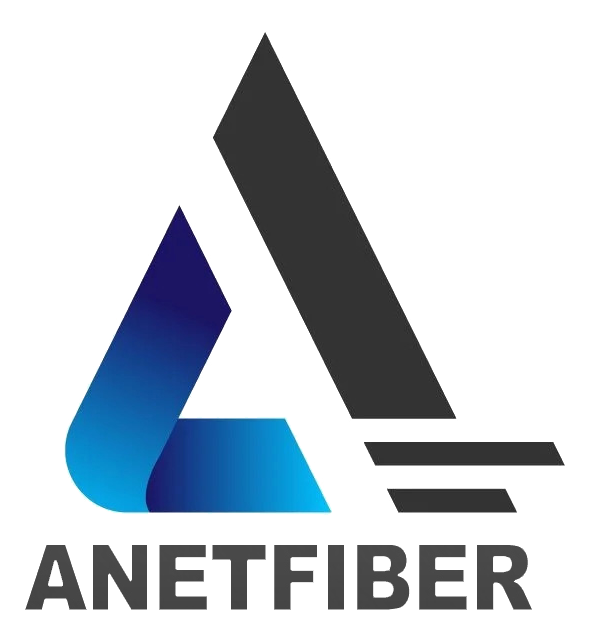Compare Fiber Optic with Traditional Internet: The Speed Showdown

Understanding Fiber Optic and Traditional Internet Technologies
In the world of internet connectivity, two primary technologies stand out: Fiber Optic and traditional internet. Each has its own set of characteristics and capabilities that define their performance. Let's delve into the basics of these technologies to understand how they work.
What is Fiber Optic Internet?
Fiber optic internet relies on cutting-edge technology that utilizes thin strands of glass or plastic to transmit data at incredibly high speeds. The technology is based on the principle of transmitting data using light signals, resulting in unparalleled speed and reliability.
The Basics of Fiber Optic Technology
The core component of fiber optic technology is the optical fiber, which consists of a core surrounded by a cladding layer. This design allows light to travel through the fiber with minimal loss, enabling data transmission over long distances without compromising speed.
How Fiber Optic Transmits Data
When data is transmitted through fiber optic cables, it is converted into light pulses that travel through the optical fibers. These pulses carry the information to its destination, where it is then converted back into its original form. This process occurs at remarkable speeds, making fiber optic internet one of the fastest and most efficient connectivity options available.
Traditional Internet Explained
Traditional internet primarily encompasses two main technologies: copper wires with Digital Subscriber Line (DSL) and cable internet. Both rely on physical infrastructure to transmit data but operate differently from fiber optic technology.
Copper Wires and DSL
DSL operates by utilizing existing copper telephone lines to deliver internet connectivity. While it offers widespread availability, its speeds are limited compared to modern fiber optic connections.
Cable Internet Basics
Cable internet, on the other hand, uses coaxial cables to transmit data. It provides faster speeds than DSL in many cases but still falls short when compared to the capabilities of fiber optic technology.
Comparing Fiber Optic and Traditional Internet Speeds
When it comes to internet speeds, Fiber Optic technology offers exceptional performance that surpasses traditional internet options. Understanding the speed capabilities of each technology is crucial in making informed decisions about internet connectivity.
The Speed of Fiber Optic Internet
Fiber optic speeds are renowned for their remarkable performance, offering both maximum speeds and consistent average performance. With the capacity to deliver fiber optic speeds of up to 1 gigabit per second (Gbps), users can experience lightning-fast downloads and seamless streaming. The average performance of fiber optic connections also remains consistently high, ensuring a reliable internet experience for users.
Maximum Speeds and Average Performance
The maximum speeds achievable with fiber optic connections are truly impressive, reaching up to 1 Gbps in ideal conditions. This allows for rapid data transfer, enabling activities such as high-definition video streaming, online gaming, and large file downloads to occur without any noticeable lag or buffering.
In addition to its impressive maximum speeds, the average performance of fiber optic connections remains consistently high across different usage scenarios. Whether it's browsing the web, video conferencing, or transferring files, users can expect swift and responsive internet access at all times.
Factors Affecting Fiber Optic Speeds
Several factors contribute to the overall speed capabilities of fiber optic internet. The quality of the optical fibers used in the network infrastructure plays a significant role in determining the achievable speeds. Additionally, network congestion and the efficiency of data routing systems can impact real-world speed experiences for users.
Traditional Internet Speeds Overview
In contrast to fiber optic, traditional internet technologies such as DSL and cable have distinct speed limitations that affect their overall performance.
Speed Limitations of DSL and Cable
DSL connections are known for their relatively modest speeds compared to modern standards. While they provide basic internet access suitable for standard web browsing and email usage, they may struggle to support bandwidth-intensive activities like high-definition video streaming or online gaming.
Cable internet offers faster speeds than DSL in many cases but still falls short when compared to the capabilities of fiber optic technology. Despite providing improved performance over DSL connections, cable internet may exhibit variability in its speed offerings based on factors such as network load and infrastructure quality.
Variability in Traditional Internet Speeds
One common characteristic of traditional internet technologies is the variability in their speed performances. Users may experience fluctuations in download and upload speeds based on factors like peak usage times and network congestion. This variability can lead to inconsistent user experiences when engaging in bandwidth-intensive activities or relying on stable connectivity for work or entertainment purposes.
How Fiber Optic Internet Can Improve Overall Network Performance
Reliability and Consistency of Fiber Optic
When it comes to network performance, Fiber Optic internet stands out for its exceptional reliability and consistency. This technology offers a level of dependability that significantly reduces downtime and enhances overall productivity for users.
Less Downtime, More Productivity
One of the key advantages of Fiber Optic internet is its ability to minimize downtime. The robust nature of fiber optic infrastructure makes it less susceptible to outages caused by inclement weather or physical wear. As a result, businesses and individuals relying on fiber optic connections can maintain consistent access to online resources, leading to increased productivity and uninterrupted workflow.
Moreover, the resilience of fiber optic networks against external interferences ensures that users can rely on stable internet connectivity even during adverse weather conditions or unforeseen circumstances. This level of dependability is particularly valuable for mission-critical applications and activities that demand continuous access to online services.
Weather and Distance Impact
Unlike traditional internet technologies, Fiber Optic internet is not affected by weather-related interferences in the same way. While copper-based connections may experience disruptions during heavy rain or electrical storms, fiber optic cables remain largely unaffected by these environmental factors. This inherent resistance to weather-related challenges further solidifies the reputation of fiber optic as a reliable and resilient connectivity solution.
Furthermore, the distance between the user's location and the central network infrastructure has minimal impact on fiber optic speeds. Unlike traditional DSL connections that experience degradation over longer distances from the service provider's facilities, fiber optic maintains consistent performance regardless of geographical location. This characteristic ensures that users in remote areas can still enjoy high-speed internet access without compromising on reliability.
Benefits Beyond Speed
In addition to its unparalleled speed capabilities, Fiber Optic internet offers several other benefits that contribute to an enhanced network performance experience.
Symmetrical Upload and Download Speeds
One notable advantage of fiber optic technology is its ability to deliver symmetrical upload and download speeds. Unlike traditional connections where upload speeds are often significantly slower than downloads, fiber optic provides equal bandwidth for both uploading and downloading data. This symmetrical performance is particularly advantageous for activities such as video conferencing, cloud computing, and large file transfers, where seamless bidirectional data flow is essential.
Future-Proofing with Fiber Optic
As technology continues to advance at a rapid pace, future-proofing network infrastructure becomes increasingly important. Fiber Optic internet represents a forward-looking investment due to its capacity for accommodating higher bandwidth demands in the future. By adopting fiber optic connectivity now, businesses and individuals can position themselves to seamlessly integrate upcoming technologies without requiring extensive network upgrades or overhauls.
Future of Internet: Fiber Optic Speeds Leading the Way
The Growing Demand for High-Speed Internet
As technology continues to advance, the demand for high-speed internet has surged across various sectors. Fiber Optic technology has emerged as a pivotal solution in meeting these escalating needs. The proliferation of streaming services, online gaming platforms, and other bandwidth-intensive applications has underscored the necessity for robust and reliable Internet Speeds.
The Role of Fiber Optic in Meeting Future Needs
In addressing the evolving requirements of internet users, Fiber Optic plays a crucial role in delivering the speeds necessary to support modern digital activities. Whether it's streaming high-definition content, engaging in real-time multiplayer gaming, or conducting bandwidth-heavy business operations, Fiber Optic offers the capabilities needed to meet these demands effectively.
Expanding Fiber Optic Networks
Infrastructure Developments
The expansion of Fiber Optic networks is a key focus for enhancing global connectivity. Ongoing infrastructure developments aim to extend the reach of fiber optic technology to more regions, enabling greater access to high-speed internet. By deploying advanced network architectures and leveraging cutting-edge fiber optic solutions, providers can deliver enhanced connectivity experiences to users worldwide.
Global Fiber Optic Expansion Efforts
On a global scale, concerted efforts are underway to expand Fiber Optic networks and bridge the digital divide. Governments, telecommunications companies, and industry stakeholders are collaborating to implement extensive fiber optic deployment initiatives. These endeavors seek to bring high-speed internet access to underserved areas while also reinforcing existing network infrastructures with state-of-the-art fiber optic capabilities.


